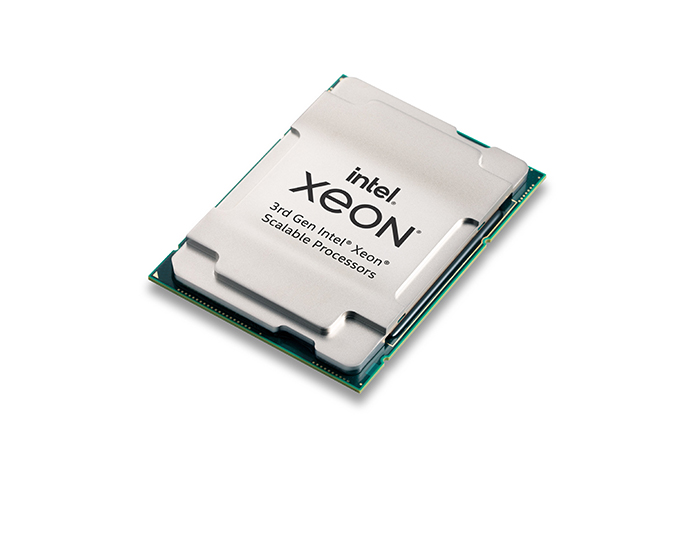AT&T, SK Telecom, Verizon, Vodafone all working with Intel on 5G network transformation
This week Intel touted its 3rd generation Xeon scalable processor and, in a virtual track focused on telco applications and complementary products, carrier executives discussed their work with Intel around virtualization of the radio access network, core advancements, network programmability, and content delivery networks.
Intel’s Dan Rodriguez, corporate vice president and general manager of the Network Platforms Group, in a presentation discussed not just the 3rd-gen Xeon but also Intel FPGAs, Ethernet adaptors, memory solutions and software toolkits.
Rodriguez said the network optimized SKUs of the latest Xeon, N-SKUs, when paired with other Intel solutions, provide performance improvements along with reductions in total cost of ownership.
Vodafone, as well as European operators Deutsche Telekom, Orange and Telefonica, have all committed to large-scale commercial deployment of virtualized, Open RAN equipment in the coming years. Vodafone Group’s Yago Tenorio, head of group network architecture, noted that the operator’s joint work with Intel on RAN virtualization started in 2014 and, since then, “We’ve driven Open RAN to almost being a commercial reality. That would not have been possible without you guys. One main outstanding challenge remains and it is the ability to run 5G massive MIMO workloads. That requires extremely high performance silicon. I’m looking forward to working with you to solve that problem.”
Broadly on vRAN, Rodriguez said during his presentation that “to our knowledge all early vRAN deployments are running on Intel architecture.” In an interview with RCR Wireless News, Rodriguez said the N-SKUs were designed with operator requirements around massive MIMO in mind. “We’re seeing great response for this product due to us really developing this silicon to meet this need but [also] developing the FlexRAN reference architecture to allow our customers to easily use our platform and get to market.”
Specific to massive MIMO, Intel estimates a 2x increase in throughput in a similar power envelope for a 3 x 100 megahertz 64T64R radio system configuration “which is considered a best in class implementation,” according to company literature.
Verizon’s Bill Stone appeared during Rodriguez’s session and said Intel’s advancements in silicon are going to be very important to the company’s upcoming “5G massive MIMO deployment in the recently acquired C Band spectrum” that the carrier spent more than $45 billion on in an FCC-auction and adjusted its capex up by $10 billion over three years to deploy.
Stone, Verizon’s vice president of technology planning and development, told Rodriguez during the virtual event, “Virtualizing the entire network from the core to the edge has been a massive, multi-year redesign of our entire network. The advancements of virtualized technology are a critical piece of how we’re building a scalable, flexible, and programmable network to manage solutions that will be prevalent in a 5G digital environment such as massive IoT solutions, more robust consumer devices and solutions, AR/VR, and many more.”
Bill Stone from Verizon, “Virtualizing the entire network from the core to th edge has been a massive, multi-year redesign of our network architecture that simplifies and modernizes our entire network. The advancements of virtualized technology are a critical piece of how we’re building a scalable, flexible, and programmable network to manage solutions that will be prevalent in a 5G digital environment such as massive scale IoT solutions, more robust consumer devices and solutions, AR/VR and many more.”
SK Telecom is working with Intel as part of its larger NFV optimization efforts for its 5G core and other network elements. Speaking of the combination of Intel CPUs and Ethernet adaptors, SK Telecom’s Richie Ahn of the carrier’s Core Engineering Team said the complementary nature of the products “will result in our subscribers enjoying stable 5G service quality with high bandwidth and low latency.”
In regard to content delivery networks, AT&T’s Sunil Maloo discussed the importance of CDN performance and cost efficiency in the context of AT&T’s positioning as a “premiere media company” with the acquisition and integration of the former Time Warner assets which now are under the umbrella of Warner Media.
Maloo, AVP of network design and orchestration, said the combination of Xeon and Intel memory solutions “allows us to more easily scale our platform for the future.”
Rodriguez, in an interview ahead of the Xeon (code-named Ice Lake) announcements, said the goal with these product launches was to consider and support what service providers need to do in 2021 and beyond with laser focus on delivering standalone. “5G needs to be built with services in mind up front and getting that flexibility with the 5G standalone core is paramount,” he said. Extending virtualization out from the core to the RAN and edge creates an agile network capable of adapting to the myriad 5G use cases currently in development and as yet unexplored.
The latest-gen Xeon scalable processors were “designed from the group up to target the many workloads and performance levels” associated with 5G, Rodriguez said.

